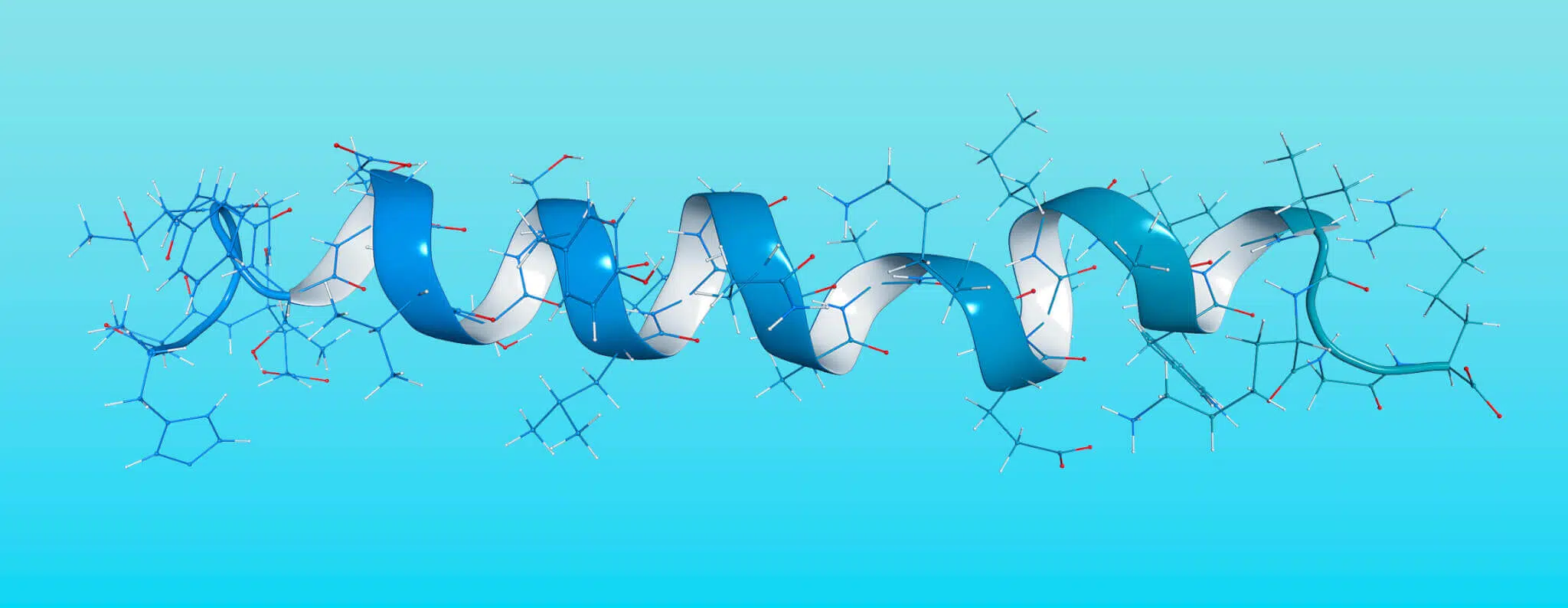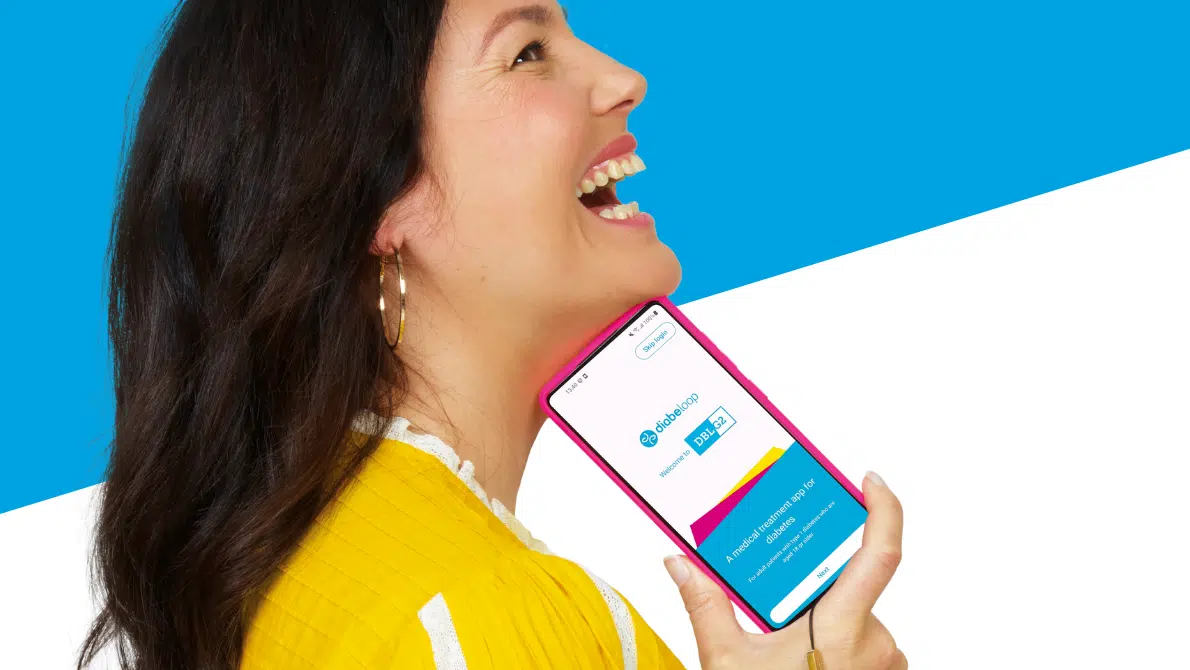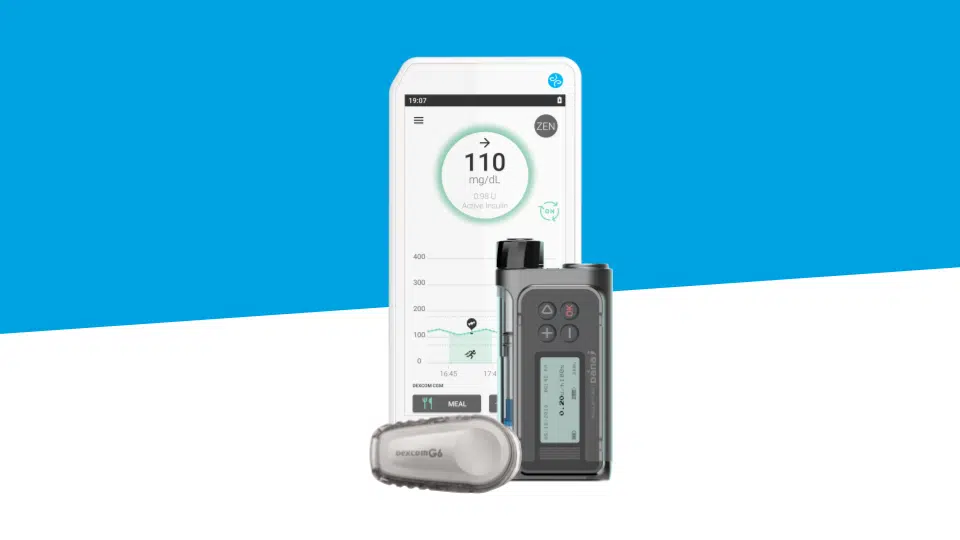
Glucagon: why, when and how to use it?
What is glucagon?
Glucagon is a hormone secreted by the alpha (α) cells of the islets of Langerhans in the pancreas, a gland in the abdomen involved in digestion and the production of hormones that are released into the bloodstream1. The islets also contain beta cells that make insulin.
What are the main functions of glucagon?
A healthy pancreas secretes both insulin (beta β-cells) and glucagon (alpha α-cells) to maintain normal blood sugar levels. In a person without Type 1 diabetes, when blood sugar levels are too low, glucagon is secreted to bring them back to normal. It is a hyperglycemic substance. It is the hormone of energy requirements, especially for muscles under conditions such as fasting and physical exercise. Its properties are opposite to those of insulin, which is hypoglycemic (lowers blood sugar). There is a balance between these two hormones, insulin and glucagon, to keep blood sugar levels at normal values.
The main action of glucagon is as follows:
> The body stores glucose in a reserve form, glycogen, in large quantities in the liver. In case of need (fasting, muscular exercise, etc.), glucagon will allow the rapid release of glucose to meet the body’s needs. However, liver reserves are limited. When the body’s energy needs persist and exceed the liver’s capacity, the body calls on another reserve: fat (or lipids), which, particularly under the influence of glucagon (and insulin deficiency), can be transformed into ketone bodies1. The most common of these ketone bodies, ß- hydroxybutyrate, synthesized in the liver, passes into the bloodstream and can then be used as an alternative fuel to glucose in peripheral tissues.
The main stimulus for glucagon secretion is a drop in blood glucose levels2. Stress, through activation of the autonomic nervous system, protein ingestion3, and certain fatty acids can also stimulate glucagon secretion.
What about for people living with Type 1 diabetes?
The absence of insulin in people with unbalanced or poorly managed Type 1 diabetes is accompanied by hypersecretion of glucagon4 (which will then be corrected with blood glucose normalization).
After eating, there is an increase in glucagon (hyperglucagonemia), due to decreased beta cell (retro)control of alpha cell function5.
However, over time, a defect in glucagon production will set in, all the more marked if the diabetes is old (progressive damage to the α cells of the islets of Langerhans). This secondary alteration of alpha cell function would explain the decrease over time in the hyperglycemic response to hypoglycemia.
I have Type 1 diabetes. Can I use it? If so, when do I use glucagon?
Glucagon is the treatment for severe hypoglycemia. Severe hypoglycemia is when the person needs the help of another person to treat themselves.
If the person cannot take sugar by mouth (fruit juice, sugar cube etc.) and, in particular, if the patient is unconscious, then glucagon may be administered subcutaneously or intramuscularly by a third party. After injection, it will cause blood sugar levels to rise within 5 to 15 minutes and for about 10 to 40 minutes. Glucagon is available in pharmacies in the form of an injectable kit.6
With technological advances, are there other uses for glucagon?
Technological advances have the potential to improve the lives of people living with diabetes by reducing the risk of hypoglycemia, improving overall control of blood glucose levels and enhancing their quality of life. Single-hormone (insulin only) and dual-hormone (insulin and glucagon) automated insulin delivery systems (which fall into the scientific category of “artificial pancreases”) have been developed, based on the connection of one or two insulin pumps to a continuous glucose monitor (CGM) and a control algorithm (housed in a dedicated device or directly in the pump).
With bi-hormonal solutions (insulin + glucagon), insulin acts as a “brake” on blood sugar levels, glucagon as an “accelerator”, and blood sugar monitoring makes it possible to adapt the speed of each with the help of calculation algorithms, in order to normalize blood sugar levels in all situations (“closed-loop”).
Scientists have studied these solutions and have shown that the bi-hormonal system (insulin-glucagon), compared to the mono-hormonal system (insulin alone), would make it possible to reduce the percentage of time spent in hypoglycemia, particularly during physical activity. However, the bi-hormonal solution has limitations:
- It’s more cumbersome and demanding,
- the glucagon cartridge needs to be changed daily,
- lack of stability of the solution at room temperature,
- unknown effects of prolonged glucagon use7, which probably explains why most closed-loop studies so far have involved single-hormone systems8.
Could glucagon be a future therapeutic target?
To improve diabetes control, limiting the effects of glucagon could be a treatment option, especially in Type 2 diabetes where glucagon secretion is significant (reduction or even inhibition of its secretion).
Molecules developed and tested in the laboratory to slow down the effect of glucagon (glucagon receptor antagonists) have shown encouraging results in terms of glycemic control. However, the side effects observed with these molecules do not allow their use in clinical practice (increase in LDL – cholesterol, abnormal alpha cell development). Research is ongoing to limit the action of glucagon in people living with diabetes.9, 10, 11
Sources
- Grimaldi A. Traité de diabétologie. Glucagon. Paris: Flammarion, 2005; pp. 67-89.
- Gromada J, Franklin I, Wollheim CB. Alpha-cells of the endocrine pancreas: 35 years of research but the enigma remains. Endocr Rev 2007; 28:84-116
- Quesada I, Tudurí E, Ripoll C, Nadal A. Physiology of the pancreatic alpha-cell and glucagon secretion: role in glucose homeostasis and diabetes. J Endocrinol 2008;199:5-19.
- Unger RH, Orci L. Paracrinology of islets and the paracrinopathy of diabetes. Proc Natl Acad Sci USA. 2010 Sep 14;107(37):16009-12.
- Brown RJ, Sinaii N, Rother KI. Too much glucagon, too little insulin: time course of pancreatic islet dysfunction in new-onset type 1 diabetes. Diabetes Care 2008; 31:1403-1404.
- https://www.vidal.fr/substances/1644/glucagon/
- Peters TM Haidar A. Dual-hormone artificial pancreas: benefits and limitations compared with single-hormone systems. Diabet Med 2018; 35: 450- 9
- Méta Analyse de Bekiari 2018, BMJ. 2018; 361:1310.
- Evans MR, Wei S, Posner BA, Unger RH. An AlphaScreen Assay for the Discovery of Synthetic Chemical Inhibitors of Glucagon Production. J Biomol Screen. 2016 Apr;21(4):325-32.
- Guan HP, Yang X, Lu K. Glucagon receptor antagonism induces increased cholesterol absorption. J Lipid Res. 2015 Nov;56(11):2183-95
- Yu R. Mahvash Disease: 10 Years After Discovery. Pancreas. 2018 May/Jun;47(5):511-515.







